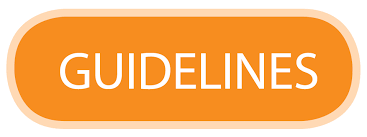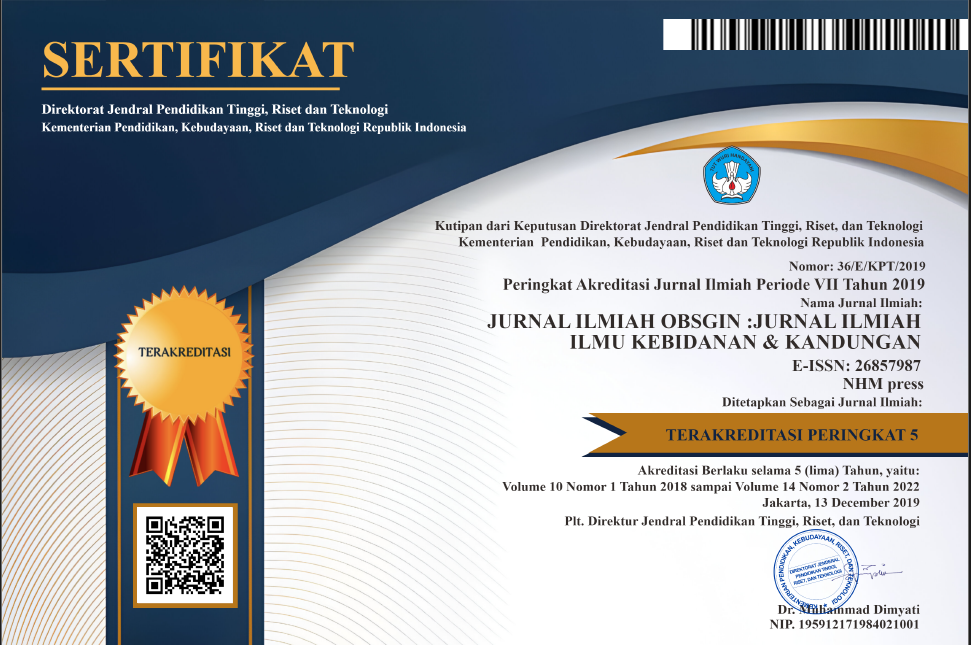PERBEDAAN TERAPI PIJAT AKUPRESUR DAN BREASTCARE TERHADAP PENGELUARAN ASI PADA IBU POSTPARTUM
Abstract
Acupressure massage and breast care is one way to increase milk production. The purpose of this research is to know the difference between acupressure massage therapy and breastcare on the release of breast milk in postpartum mothers at PMB S.H Panongan, Tangerang Regency, Banten. This research method is a quasi-experimental using a pretest and posttest with control group design. The sample in this study amounted to 30 postpartum mothers 1-4 days in February-April 2022 who gave birth at PMB S.H Panongan Tangerang Regency Banten with 15 respondents in each group. The sampling technique is total sampling. The research instrument used an observation sheet of 7 indicators of the smooth flow of breast milk. The data were analyzed using an independent T-test which had previously been tested for normality and homogeneity. The results of the study of breast milk production before receiving acupressure massage therapy were mostly not smooth as much as 86.7% and afterward most of them were smooth as much as 93.3%. Expenditure of breast milk before getting breastcare was mostly not smooth as much as 86.7% and after that mostly smooth as much as 80.0%. There is a difference between acupressure massage therapy and breastcare on the ejection of breast milk in postpartum mothers with a significance level of 0.007. The conclusion is that giving acupressure massage therapy is more effective in removing breast milk in postpartum mothers than breast care.
References
Cholifah, S., ER, H. S., & Mareta, R. (2015). Akupresur pada ibu menyusui meningkatkan kecukupan asupan asi bayi di kecamatan mungkid tahun 2014. Jurnal Keperawatan Maternitas, 3(2), 111–117.
Dinas Kesehatan Provinsi Banten. (2020). Profil Kesehatan Provinsi Banten Tahun 2020.
Djanah, N., & Muslihatun, W. N. (2017). Akupresur terhadap produksi asi pada ibu post partum. Photon: Jurnal Sain Dan Kesehatan, 8(01), 73–77.
Elizabeth, S. W. dan E. P. (2019). Asuhan Kebidanan Masa Menyusui dan Menyusui. Pustaka Baru Press.
Febrindari, A. P. (2016). Hubungan Asupan Energi, Protein, Seng, dan Kejadian Infeksi Kecacingan dengan Status gizi Anak Umur 12-36 Bulan. Artikel penelitian. Semarang: Fakultas Kedokteran Universitas Diponegoro.
Kemenkes RI. (2018). Hasil utama RISKESDAS 2018. In Kementerian Kesehatan Badan Penelitian dan Pengembangan Kesehatan. https://kesmas.kemkes.go.id/assets/upload/dir_519d41d8cd98f00/files/Hasil-riskesdas-2018_1274.pdf
Khabibah, L., & Mukhoirotin, M. (2019). Pengaruh terapi akupresur dan pijat oksitosin terhadap peningkatan produksi ASI pada ibu postpartum di RSUD Jombang. Jurnal EDUNursing, 3(2), 68–77.
Lestari, E. F., & Dwihestie, L. K. (2020). ASI eksklusif berhubungan dengan kejadian stunting pada balita. Jurnal Ilmiah Permas: Jurnal Ilmiah STIKES Kendal, 10(2), 129–136.
Perinasia. (2019). Manajemen Laktasi; Menuju Persalinan Aman dan Bayi Lahir Sehat. Gramedia Pustaka Utama.
Rahayu, S., & Apriningrum, N. (2014). Faktor-Faktor Yang Berhubungan Pemberian ASI Ekslusif Pada Karyawati Unsika tahun 2013. Jurnal Ilmiah Solusi, 1(1), 55–63.
Saputri. (2021). Literatur Review Efektivitas Akupresur Terhadap Produksi ASI Pada Masa Nifas. Sekolah Tinggi Ilmu Kesehatan Insan Cendekia Medika Jombang.
Soetjiningsih. (2019). Tumbuh Kembang Anak. EGC.
World Health Organization. (2018). Maternal mortality. https://www.who.int/news-room/fact-sheets/detail/maternal-mortality
Zairinayati, Z., & Purnama, R. (2019). Hubungan hygiene dan sanitasi lingkungan dengan kejadian stunting pada balita. Babul Ilmi Jurnal Ilmiah Multi Science Kesehatan, 10(1).











